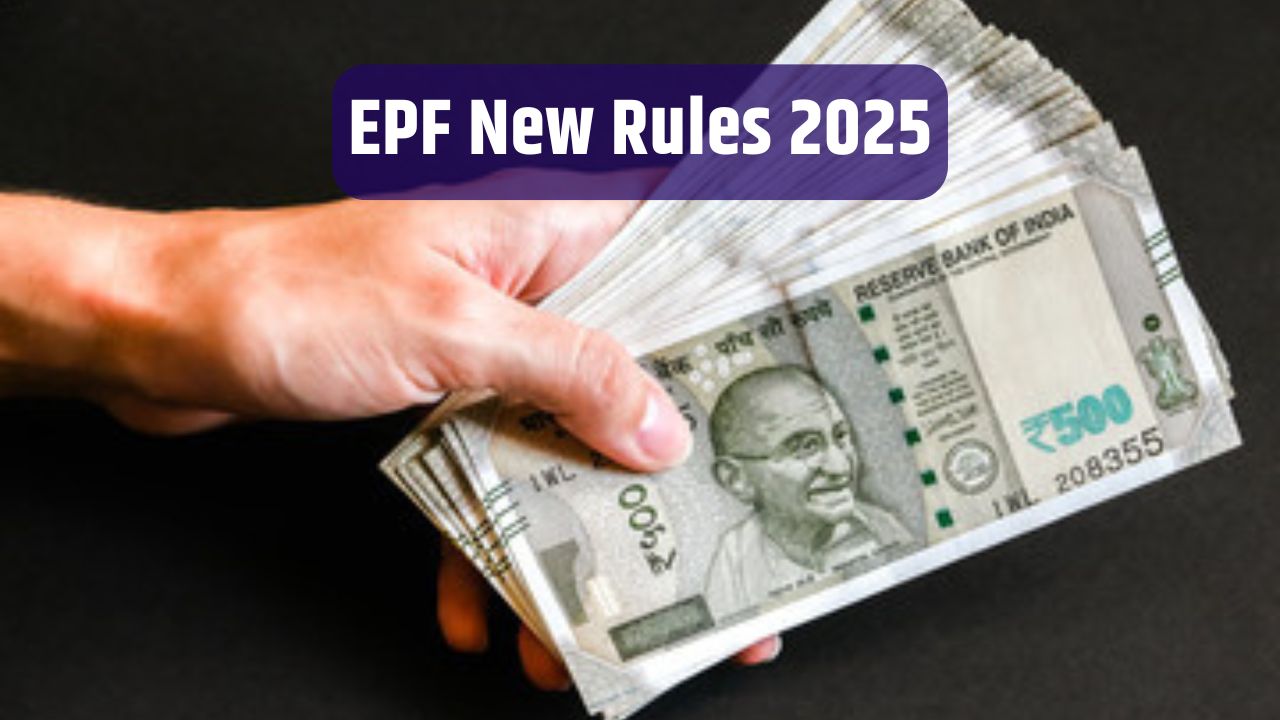EPF Advance Rules 2025: The Employees’ Provident Fund (EPF) is one of the most widely used retirement savings schemes in India. Both employees and employers contribute 12% of the employee’s basic salary and dearness allowance to the fund, which earns interest annually as decided by the Employees’ Provident Fund Organisation (EPFO).
While EPF is primarily meant for retirement, the EPFO also permits partial withdrawals—known as EPF advances—during service for specific personal and financial needs. Here’s a comprehensive list of 11 scenarios under which EPF members can legally withdraw money from their account without quitting their job:
1. Marriage Expenses
-
Eligibility: At least 7 years of EPF membership, and a minimum balance of ₹1,000.
-
Purpose: Can be used for the member’s own wedding, or the wedding of their children or siblings.
-
Withdrawal Limit: Up to 50% of the employee’s contribution including interest.
-
Frequency: Up to 3 times in a lifetime.
2. Higher Education
-
Eligibility: 7 years of EPF membership.
-
Purpose: For post-matriculation (after 12th grade) education of self or children.
-
Withdrawal Limit: Same as marriage – up to 50% of own contribution with interest.
-
Frequency: Up to 3 times in a lifetime.
3. Purchase/Construction of a House or Land
-
Eligibility: Minimum 5 years of EPF membership.
-
Ownership: The property should be in the member’s name, spouse’s name, or jointly held.
-
Withdrawal Limits:
-
Land Purchase: Up to 24 months’ basic salary + DA or total EPF balance (employee + employer share + interest), whichever is lower.
-
House Purchase/Construction: Up to 36 months’ basic salary + DA or total EPF balance or actual cost, whichever is least.
-
-
Frequency: Once in a lifetime.
-
Repair/Improvement: After 5 years of house completion; another withdrawal after 10 years.
4. Medical Emergencies
-
Eligibility: No minimum service required. Can be withdrawn any time.
-
Purpose: For medical treatment of self or family.
-
Withdrawal Limit: Least of:
-
6 months’ basic salary + DA
-
Total employee share with interest
-
Total EPF balance
-
-
Frequency: Unlimited (as needed).
5. One Year Before Retirement
-
Eligibility: Member must be 54 years or older or within one year of retirement.
-
Withdrawal Limit: Up to 90% of the total EPF balance.
-
Frequency: One-time.
6. Disability Support
-
Eligibility: Applicable for physically disabled members.
-
Purpose: To buy assistive equipment to ease living with a disability.
-
Withdrawal Limit: Lower of:
-
6 months’ basic salary + DA
-
Employee’s share with interest
-
Cost of the equipment
-
-
Frequency: Once every 3 years.
7. Unemployment Due to Company Closure or Non-Payment
-
Eligibility: Applicable if company has shut down for over 15 days or if wages haven’t been received for 2+ months (not due to strike).
-
Withdrawal Limit: Employee’s share with interest.
8. Varishtha Pension Bima Yojana (VPBY) Investment
-
Eligibility: Members aged 55 years and above.
-
Purpose: To invest in LIC’s VPBY.
-
Withdrawal Limit: Up to 90% of total EPF balance.
9. Power Cut or Electricity Shortage
-
Purpose: For temporary financial assistance during power cuts.
-
Withdrawal Limit: Lower of:
-
One month’s basic wages
-
₹300
-
Employee’s share
-
-
Form: EPF Form 31 must be submitted.
10. Repayment of Housing Loans
-
Eligibility: Minimum 10 years of EPF membership.
-
Purpose: To pay outstanding principal and interest of home loan.
-
Withdrawal Limit: Lower of:
-
36 months’ basic wages + DA
-
Total EPF balance
-
Total outstanding principal + interest
-
11. Job Termination or Retrenchment
-
Eligibility: If terminated or retrenched and contesting the decision legally.
-
Withdrawal Limit: Up to 50% of employee’s share with interest.
These provisions provide financial flexibility to EPF members during significant life events and unforeseen emergencies, without needing to wait until retirement. However, each type of withdrawal has its own eligibility conditions, limits, and frequency rules as laid out in the EPF Scheme, 1952.
